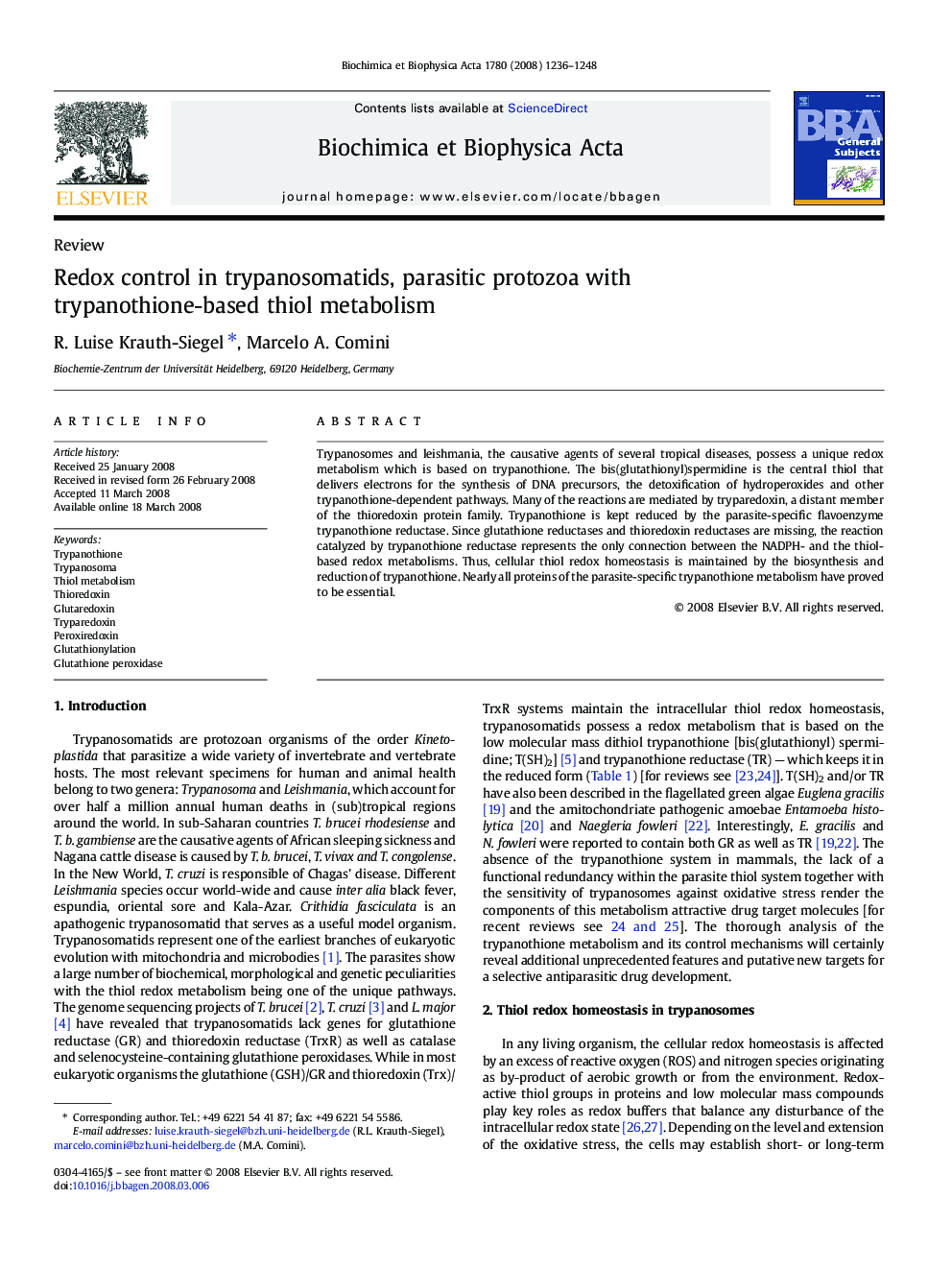| Article ID | Journal | Published Year | Pages | File Type |
|---|---|---|---|---|
| 1948346 | Biochimica et Biophysica Acta (BBA) - General Subjects | 2008 | 13 Pages |
Trypanosomes and leishmania, the causative agents of several tropical diseases, possess a unique redox metabolism which is based on trypanothione. The bis(glutathionyl)spermidine is the central thiol that delivers electrons for the synthesis of DNA precursors, the detoxification of hydroperoxides and other trypanothione-dependent pathways. Many of the reactions are mediated by tryparedoxin, a distant member of the thioredoxin protein family. Trypanothione is kept reduced by the parasite-specific flavoenzyme trypanothione reductase. Since glutathione reductases and thioredoxin reductases are missing, the reaction catalyzed by trypanothione reductase represents the only connection between the NADPH- and the thiol-based redox metabolisms. Thus, cellular thiol redox homeostasis is maintained by the biosynthesis and reduction of trypanothione. Nearly all proteins of the parasite-specific trypanothione metabolism have proved to be essential.
